
Rigging of a tall ship, Stock Photo, Picture And Rights Managed Image. Pic. ZON7284976
rigging See all media Category: Science & Tech sail rigging, the sails, masts, booms, yards, stays, and lines of a sailing vessel, or its cordage only. The basis of all rigging is the mast, which may be composed of one or many pieces of wood or metal.
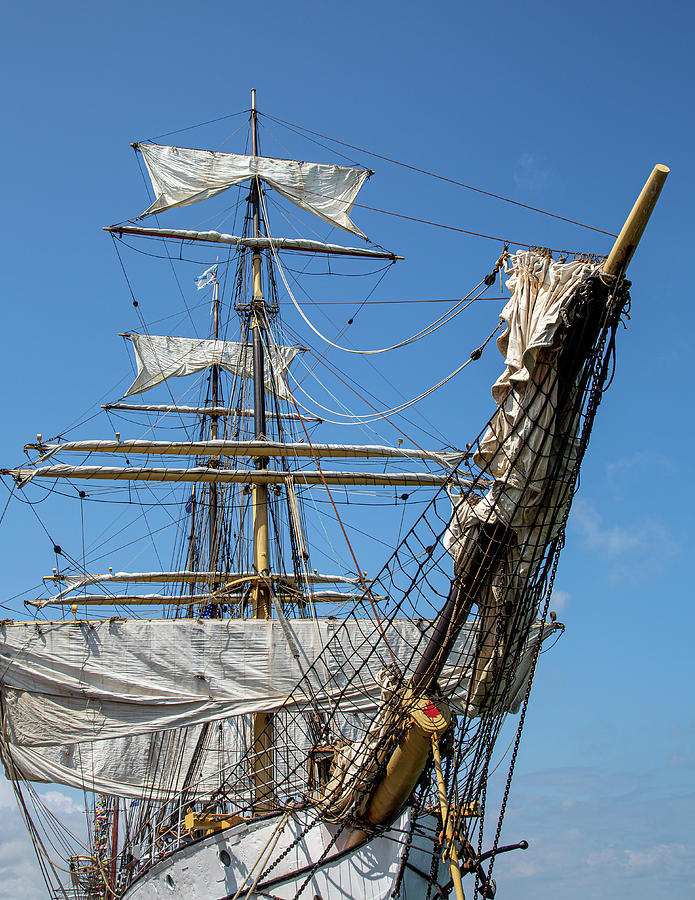
Sailing Ship Rigging Photograph by Dale Kincaid
RIGGING is, in part, prepared on shore, in a rigging-house, which has the following conveniences, &c. viz. At the upper end is a windlass; and, at certain distances, down the middle are two rows of large strong posts, for stretching ropes, and laying on service. On each side of the house are births for the men to prepare small rigging in.

Ships Rigging And Cargo Hatch Photograph by Don Bendickson
The Rigging of Ships: in the Days of the Spritsail Topmast, 1600-1720 (Dover Maritime): Anderson, R. C.: 9780486279602: Amazon.com: Books Books › Engineering & Transportation › Transportation Enjoy fast, free delivery, exclusive deals, and award-winning movies & TV shows with Prime Try Prime and start saving today with fast, free delivery Kindle

Rigging of a Sailing Ship stock image. Image of american 15872521
A rigging plan is basically a blueprint for lifting and securing heavy loads onto the ship. This blueprint includes the positions, sizes and safe working loads (SWL) of the deck eye plates, runners, guys, twist locks, wedges, chocks, beams, preventers and shackles.

The FullyRigged Ship Classic Sailor
Square Rig An ancient rig type, very rare for private yachts. Excels downwind over long distances. Trapezoidal sails held onto Spars called Yards. Immensely complex rigging. Requires large amounts of crew to operate Fore-and-aft Sails So called because when at rest, the sail sits along the length of the boat, fore-and-aft.

Crew in rigging of tall ship Sailing ships, Tall ships, Old sailing ships
1. Main sheet 2. Jib sheet 3. Boom vang 4. Downhaul 5. Jib halyard Rigging comprises the system of ropes, cables and chains, which support and control a sailing ship or sail boat 's masts and sails. Standing rigging is the fixed rigging that supports masts including shrouds and stays.

The FullyRigged Ship Classic Sailor
A full-rigged ship or fully rigged ship is a sailing vessel with a sail plan of three or more masts, all of them square-rigged. [1] Such a vessel is said to have a ship rig or be ship-rigged, with each mast stepped in three segments: lower, top, and topgallant. [2] [3] [4]
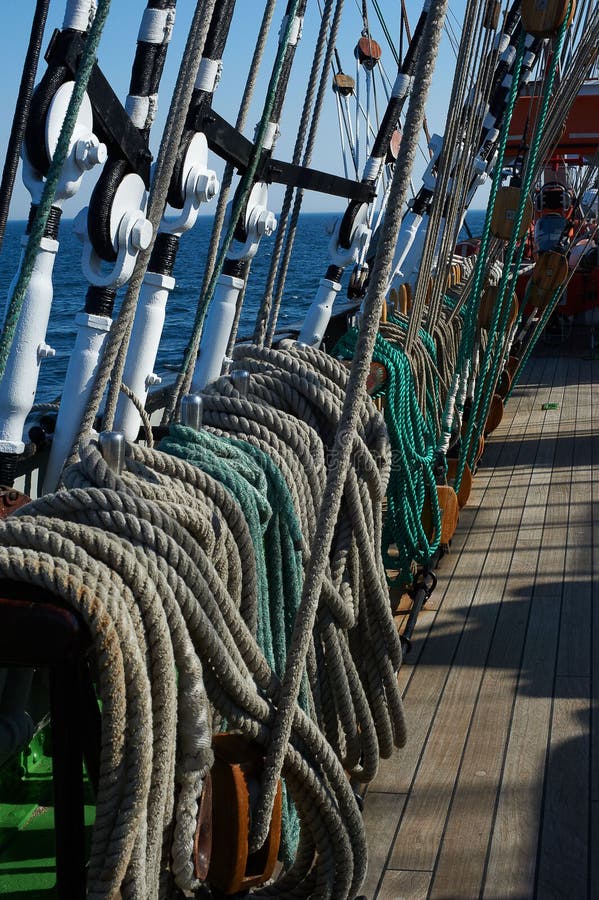
Rigging of a sailing ship stock photo. Image of travel 86197978
Rigging refers to the system of ropes, cables, and other components used to support and control the sails, masts, and other equipment on a ship or boat. It plays a crucial role in the overall functionality and safety of a vessel. The importance of rigging lies in its various functions. Firstly, rigging provides structural support to the mast.

Rigging ship hires stock photography and images Alamy
Ship - Sails, Rigging, Hull: The move to the pure sailing ship came with small but steadily increasing technical innovations that more often allowed ships to sail with the wind behind them. Sails changed from a large square canvas suspended from a single yard (top spar), to complex arrangements intended to pivot on the mast depending on the direction and force of the wind.
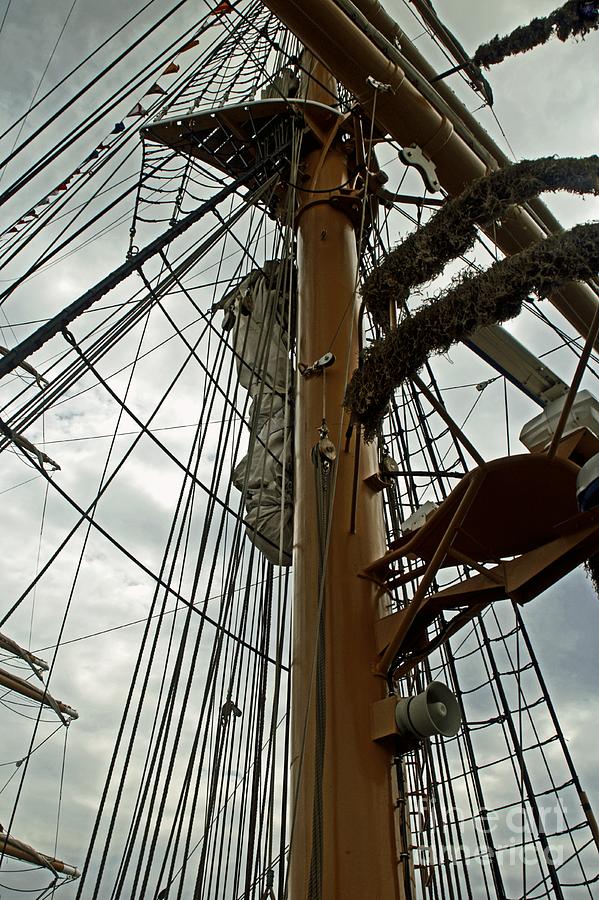
Ship Rigging by Catherine Melvin
Rigging Port and Starboard. Ancient ships had their rudders, or steering boards, on the right side of the stern of the ship. This gave rise to the Anglo-Saxon word steorbord, which means "steer side." When ships came into port to load and unload, they were tied up with their left sides closest to the dock to prevent damage to the rudder.

Rigging Wikipedia
The Rigging of Ships: In the Days of the Spritsail Topmast, 1600-1720 R. C. Anderson Courier Corporation, Mar 14, 1994 - Transportation - 320 pages For ship model-makers and students and.
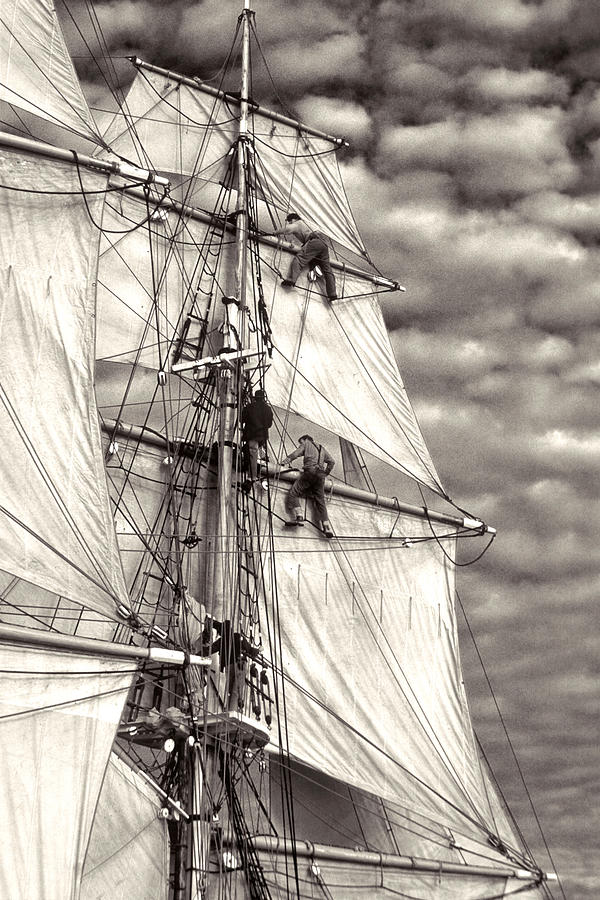
Sailors In Rigging Of Tall Ship Photograph by Cliff Wassmann
The 5 most common two-masted rigs are: Lugger - two masts (mizzen), with lugsail (cross between gaff rig and lateen rig) on both masts. Yawl - two masts (mizzen), fore-and-aft rigged on both masts. Main mast much taller than mizzen. Mizzen without mainsail. Ketch - two masts (mizzen), fore-and-aft rigged on both masts.
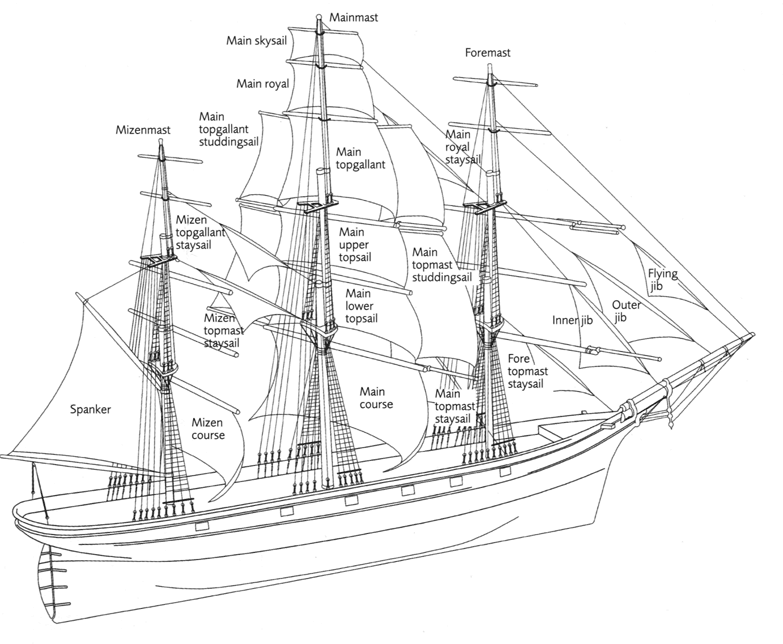
A Brief Look into SquareRigged Sailing Ship Innovations EcoClipper
For ship model-makers and students and enthusiasts of historic sailing ships, this generously illustrated book is essential reading and a valuable reference. It describes and depicts in detail how seventeenth-century English, French, Dutch, and other European trading ships and warships were rigged from stem to stern throughout this colorful period in maritime history.The book begins in 1600.

Rigging of a tall ship stock image. Image of maritime 54593507
Model ship rigging tutorials for beginners model ship makers
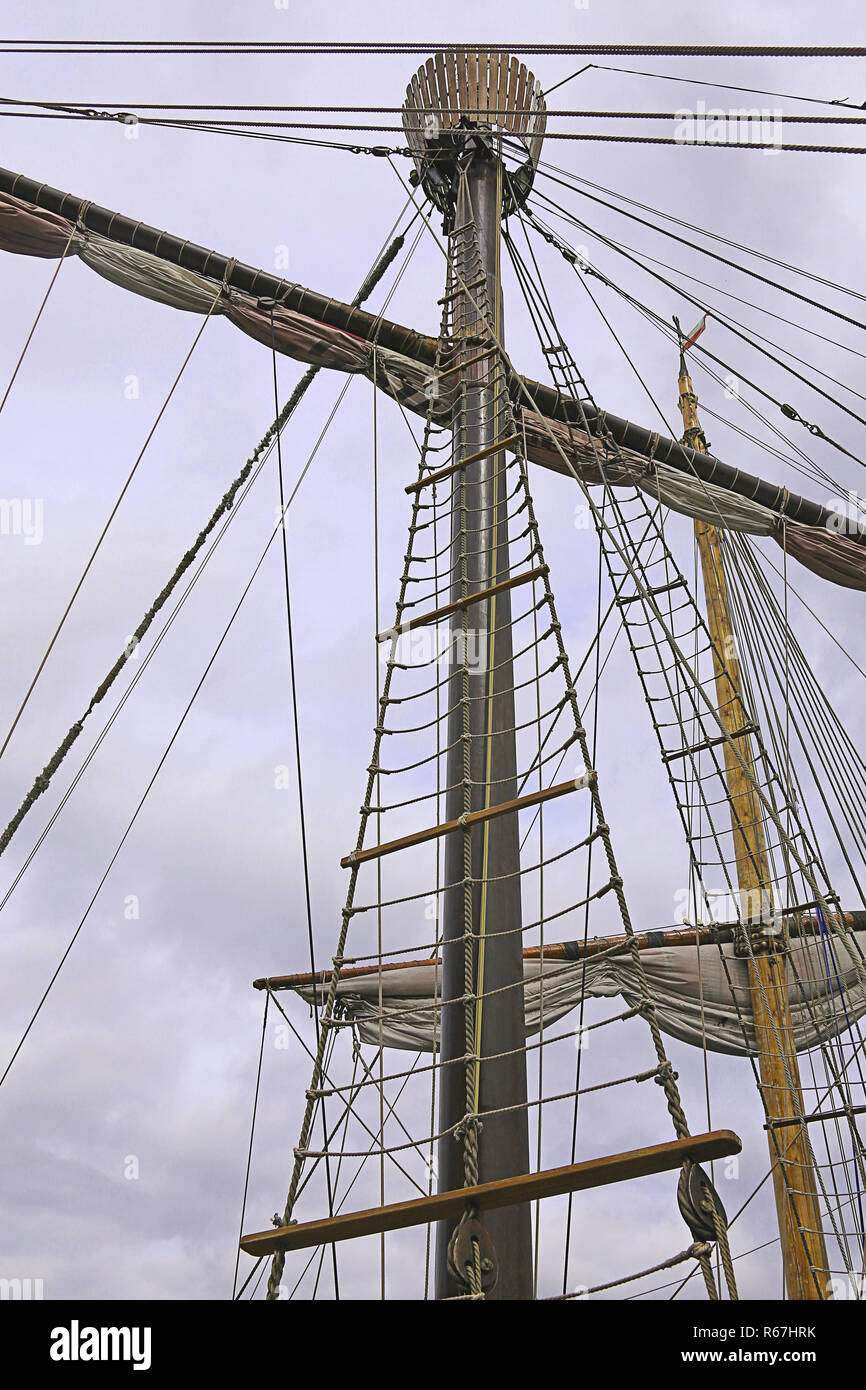
rigging of a tall ship Stock Photo Alamy
The first item rigged on the lower fore mast is the tackle pendants, if your ship has them. The line used is the same as the shrouds, which is usually hawser line (right line twist). The tackle pendants are served their full length. You always start with the starboard side first.

Running Rigging of a Sailing Ship Against Sea Water Stock Photo Image of belaying, cable 80145706
Rigging is a significant part of the process of building a model ship. It can be tedious and time-consuming however putting the effort in adds to the beauty of your finished model. Contents Introduction TYPES OF RIGGING STANDING RIGGING FITTING OF BLOCKS, EYE PINS & CLEATS DEADEYES (LOWER) AND CHAIN STRAPS/ DEADEYE STRAPS SHROUDS